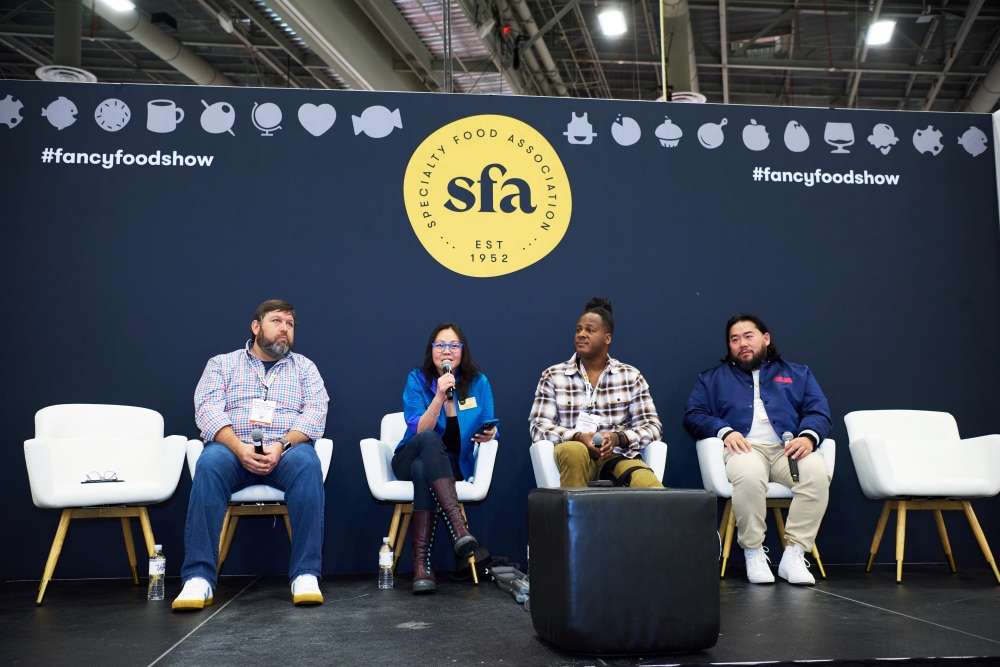“It’s almost table stakes to have an authentic story,” said Nona Lim, founder and CEO of online meal brand Nona Lim, during a conversation at the Winter Fancy Food Show about how food makers can leverage their story to drive success.
She spoke with industry leaders including James Ren, director of merchandising for branded food at Thrive Market, Karl Franz Williams founder of Uncle Waithley’s, and Hector Saldivar of Tia Lupita. Members of the panel agreed that an authentic story creates a strong foundation for a healthy company.
Williams recounted his time working on marketing at Pepsi, before launching his current ginger beer brand.
“As marketers, we were telling a story, and that story would drive the entirety of that product’s success,” he said. “The challenge with that is that story is only as good as how well it translates into your whole go-to-market strategy.”
He advised building a brand story that is true to one’s journey, while also incorporating relatability, fascination, and inspiration. “These lead to creating fanatics,” Williams said, a term he used to describe brand ambassadors that have internalized the maker’s story and are excited to purchase and use the product.
To measure the success of how well a story resonates with customers, he encourages evaluating brand awareness, followers, and other empirical statistics while also placing value on the story’s emotional resonance.
“For me, the best metric of engagement is when someone can parrot back your story in their own words. That is ultimately when you know your story is breaking through,” he said.
Saldivar emphasized the importance of being uncompromising with one’s message, even if it is inconsistent with the category because it has the potential to be a compelling differentiator that can facilitate success.
He explained that, after having the idea to open a hot sauce brand inspired by his mother’s hot sauces, he looked at the sauce section of the grocery aisle and was struck by the sheer number of brands with messaging and iconography that imply a painful or dangerous experience after ingesting spicy ingredients.
To Saldivar, hot sauce was linked to his mother and held positive, homely implications. He decided to stick to this message and be a ray of positivity in the aisle.
“I wanted to make the label the opposite of pain. It’s a picture of my mom with a curler in her hair. It’s heartfelt, warm, and exciting, and my example of cutting through the noise on the shelf,” he said.
When conveying an authentic story, it is important to be true to the audience a brand is speaking to. An authentic story told to an investor would look different from that of a buyer or consumer because they all come from different perspectives.
“You have to understand you have multiple audiences you’re trying to share your story with; tailoring that story to meet them where they are at is key—you can’t take an investor deck to a retailer,” said Ren.
At the end of the day, however, a story alone can only take a brand so far. Each panelist emphasized the need for the product to match the experience promised by the story.
“It’s got to taste good,” said Williams.
“Taste is king,” agreed Saldivar.
Related: How Makers Can Leverage Food Influencers; Todo Verde's Ramirez Wins Fancy Face-Off

